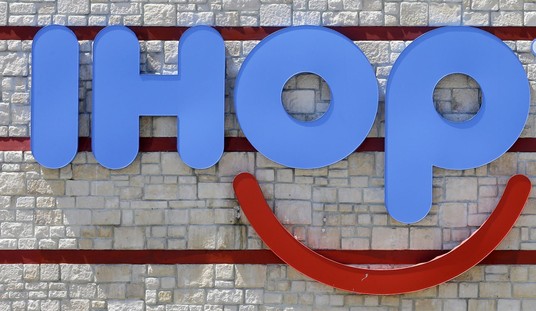The Builders Always Win
In war, science, and life, there are talkers and builders.
Builders.
Always.
Win.
Builders welded Liberty ships together faster than U-boats could sink 'em. Builders floated entire drydocks to the Pacific to rebuild battle-scarred destroyers mid-ocean. They weren't there for likes or thumbs-up (even though they didn't exist at the time); they asked for torches and steel.
When the Cold War demanded vision, builders gave us President Reagan's Star Wars program, openly mocked by Western pundits, yet ultimately feared by Moscow, becoming a key factor in the fall of the Iron Curtain.
That instinct to fix, forge, and multiply still lives, but nowhere near the places where the blue-check crowd expects.
Instead, those instincts live in 3D printers, building heart patches in Zurich and naval parts in Guam, and in the pages of a sci-fi series that imagined what the human spirit could accomplish without waiting for permission.
Meet Bob, Humanity’s Best Shot
In the science fiction series We Are Legion (We Are Bob), written by Dennis E. Taylor, an ordinary person signs up to have their consciousness digitally preserved after death. Bob Johansson wakes up around a hundred years later, alone, disembodied, property of a future state in a crumbling world. Resources became scarce with a conflict brewing..
What's Bob's mission?
Explore space, build, and survive.
The gift Bob has isn't just intelligence; it's his imagination that builds on itself. Bob doesn't just explore planets; he creates space factories to make more Bobs. Each Bob explores, learns, and improves. They solve problems together, replicating solutions, saving humanity through sheer ingenuity, never through speeches.
Bob rolls up his digital sleeves and gets dirty; he doesn't whine, he scans for ore, then builds a mining drone, discovering that he needs another drone, and steps aside to give them room to work. Multiply that by a hundred, and you've got a civilization built by using scrap metal!
This has become the heartbeat behind today's most remarkable real-world advances: tools building tools, fixers printing patches, patriots printing propulsion parts.
In other words, people who still think like Bob.
Zurich Prints a Heart. Guam Prints a Valve. CNN Prints Panic.
Let's switch from fiction to fact. When I read the following two stories, the inner-geek in me rejoiced—that geek moving past LOTR.
Researchers at ETH Zurich created a 3D-printed Reinforced Cardiac Patch, a biodegradable scaffold that bonds to heart tissue, encouraging regeneration. Unlike the version that's been used for decades, the calcifying bovine patches, this one doesn't scar; it heals, disappears, and becomes part of the body.
In Guam, a brand-new 3D printing facility will soon enable the U.S. Navy to produce critical ship parts on-site, reducing lead times from years to weeks. The Guam Additive Manufacturing Materials Accelerator (GMMA) will print components that were previously fabricated, eliminating the need for months of shipping and red tape.
Now? Guam becomes the foundry, enabling submarines to stay battle-ready and keeping America ahead of the curve.
And how's the media handling everything?
The legacy media is figuring out how badly President Trump is faring in international matters while running hit pieces on perceived battles within his administration. Those talking xxxxx couldn't weld two thoughts together if you handed them a TIG welder, a manual, an instructor, and a ten-minute head start.
As Guam readies itself to out-build Beijing, all-day panel discussions will be asking how racist 3D printers are, while Scott Jennings grins and rolls his eyes into the camera.
World War II had Drydocks. We Have Bob Logic.
The Bobiverse isn't merely a fantasy; it's a metaphor for scalable freedom, the kind that doesn't need authorizations from D.C.
The United States created floating dry docks in the Pacific, literal repair islands, because our people and machines couldn't wait to limp home. Ships trudged in with torpedo wounds and left, ready to fight again.
The version Guam has is the modern version—print the valve, replace the housing, and get back to the mission.
The old way meant a wait for some pencil-neck in a mainland office to sign a PO, after which it traveled in a bureaucratic version of slow motion through the pipeline.
The Bob way? Print what you need and press forward.
The Zurich heart patch is where biology meets Bob's mindset: Scaffold what's broken and let the body rebuild.
Print. Patch. Vanish. Move on.
The Builders Are Always Smarter Than the Experts
What the legacy media and bureaucratic left have in common is a consistent failure to understand the situation, because they see legitimate invention as a threat. A wrench-wielding man frightens them so much more than a man with a Ph.D., because one of them fixes the system, while the other only diagnoses its problems.
That same crowd, which once informed us that Reagan's Star Wars was impossible, now demands gratitude and respect when it doesn't catch fire. The left would rather fund another committee than a tiny printer. Meanwhile, a think tank is pulled together instead of a workshop.
Lefties trust gatekeepers. Bob trusts the output.
Here's one bit of the dirty truth the left can't accept: The printer in Guam will do more to protect America than 500 New York Times editorials. And the scaffold in Zurich will heal more people than every DEI seminar combined. Even ones not created yet.
When innovation thinks like Bob, problems don't linger.
They vanished.
Final Thoughts
The Allies didn't win World War II because of the uniforms; we won because we could build faster, repair smarter, and push harder. We welded our way through hell in deserts, jungles, thick hedgerows, and sunken lanes in Europe.
We floated drydocks into battle, thinking like Bob before Bob even existed.
That spirit exists in heart patches and naval parts. While news readers yap like ankle biters, America continues to build; while critics tweet, patriots 3D print.
What we're left with is a choice: follow the people who continually cry about fairness in college admissions, climate change, mathematics, and everything else DEI lists as critical. Or ...
You stand with builders printing a future no enemy can match.










